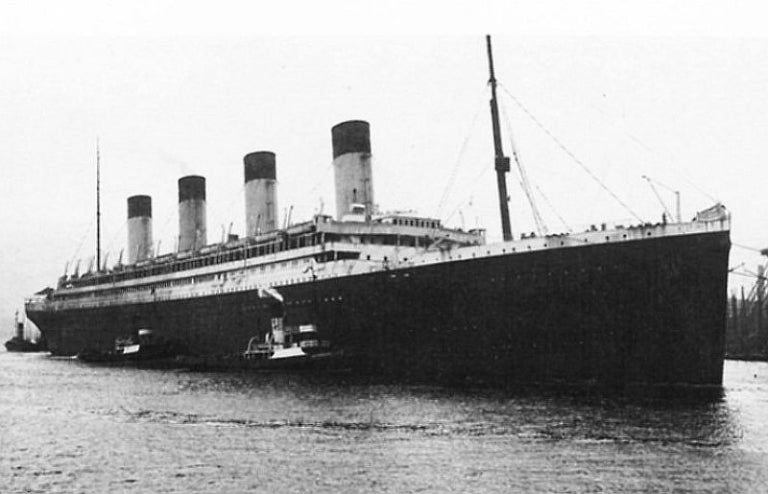Throughout maritime history, few names have ever commanded as much awe and fascination as the RMS Titanic. Yet, little limelight has been shared with her sister ship—the RMS Olympic—a vessel that navigated not merely the waters of the Atlantic but the turbulent currents of history itself. Known affectionately as “Old Reliable,” Olympic not only outlived her ill-fated sister by more than two decades but also rendered immeasurable service during World War I, defying the comforts of luxury for the difficulties of conflict.
Early Years: A Promising Inception
Brought to life in the same Harland and Wolff shipyard that conceived the Titanic, the Olympic was an engineering marvel of its day, boasting an amalgamation of luxury and cutting-edge technology. She embodied Edwardian luxury, complete with sumptuous interiors adorned in the neoclassical and Louis Quinze styles, basking in the gentle glow of crystal chandeliers. Resplendent ballrooms, opulent cabins, and gourmet dining awaited the elite who embarked upon her. Initially setting sail in 1911, a year before the tragic sinking of the Titanic, Olympic seemed destined for a life that epitomized seafaring grandeur.
A Radical Transformation: From Grandeur to Grit
When World War I broke out in 1914, everything changed for the Olympic. No longer just a floating palace, the British government suddenly drafted the ship into military service. This wasn’t just a change of scenery but a complete makeover. Gone were the luxurious trappings, replaced by the practical necessities of wartime. Stripped of her plush accouterments, she was fortified with layers of drab, gray paint, augmented by armaments and recalibrated to accommodate thousands of troops. Initially a hospital ship in the Mediterranean, she later became a full-fledged troop carrier, shuttling soldiers between North America and Europe.
The Hazardous Atlantic: Facing Unseen Enemies
Amidst this chaotic theater, the Olympic navigated mine-infested waters and endured the omnipresent menace of German U-boats. It was a period of palpable tension, where the ship’s prodigious size and prominent stature rendered it an unmistakable, if not inviting, target. Nevertheless, she executed her duties with a dogged resilience, managing to evade enemy capture and even ramming and sinking a German U-boat, U-103, in 1918. This unprecedented action won her the lasting moniker “Old Reliable,” affirming her mettle in the face of adversity.
Unsung Valor: Olympic’s Contributions to the War Effort
Throughout her wartime service, Olympic transported more than 200,000 troops and other personnel, traveling distances equaling three times the Earth’s circumference. Her role in sustaining the Allied war effort must be recognized, given the strategic importance of transatlantic troop movements and their severe logistical challenges. Despite these innumerable hazards, the ship’s crew navigated with a steadfast professionalism that belied the vessel’s erstwhile reputation as a pleasure cruiser.
Post-war Years and Subsequent Decline
After the war, the Olympic was returned to her original owners and underwent extensive refurbishments to restore her pre-war grandiosity. She reentered civilian service and enjoyed a modest resurgence in popularity, but the intervening years had sapped her of the unassailable allure that once defined her. Waning passenger numbers and the relentless march of technological progress gradually rendered her obsolete. In 1935, she was ignominiously sold for scrap, marking the end of an era.
A Legacy of Resilience
The story of the Olympic is a narrative punctuated by its paradoxes—a ship born into opulence yet thrust into adversity, designed for leisure but remodeled for war. And although she never achieved the infamy of her ill-starred sister, the Olympic emerged as a testament to resilience, adaptability, and unheralded heroism. It is high time we unearth this venerable ship from the shadow of her more infamous sibling and recognize her as a silent but indomitable warrior in her own right. After all, when the annals of history are scoured for tales of indomitable spirit and courage, one should not overlook this monumental ship that transcended her original blueprint to become a pivotal instrument in the theater of global conflict.
For more insights into the HMT Olympic and other important military aircraft, visit Aces In Action. Here, you’ll find an amazing piece of artwork by Craig Tinder titled “Old Reliable” which illustrates the White Star Line’s Olympic while in pursuit of her would-be attacker, the German U-Boat U-103, on 12 May 1918. The limited edition canvas print even includes a piece of original pitch pine wood deck fragment from the legendary ship itself, making it a unique piece of history!
Old Reliable – HMT Olympic Aviation Art by Artist Craig Tinder
12 May 1918, HMT Olympic, known as “Old Reliable”, was taken out of luxury liner service to provide transatlantic troop transport. Freshly camouflaged and carrying thousands of American Troops, she was the largest ship pressed into service at the time. That morning, she was shadowed by the German U-boat, U-103. As the U-boat prepared for a stern torpedo shot, Olympic hit the U-boat with her deck gun. With the submarine immobilized, the Olympic continued the attack and the 46,000 ton ship rammed U-103. “Old Reliable’s” propellers cut through the hull of U-103, sinking her within minutes. U-103 was the only warship sunk by a passenger merchant vessel in World War I.






Share:
The Controversy Over Up-armoring: The Debate and the Solutions
Major Richard “Pete” Peterson: The Triple Ace of Leiston and his Beloved P-51 Mustangs